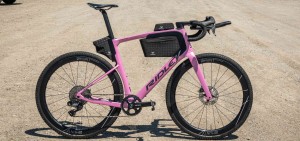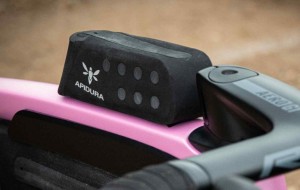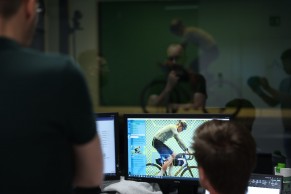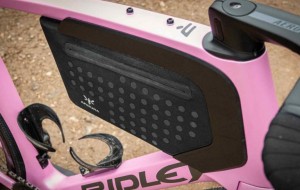This is the Bikepacking Aero by Apidudra
Apidura continues to innovate in bicycle luggage bags and now surprises us with a Bikepacking Aero system that will delight the most competitive long distance lovers.

Apidura unites Bikepacking and Aerodynamics
Surely many of you have seen images of participants in ultra-distance races, both road and gravel, in self-sufficiency format that carry their bikes equipped with all kinds of bikepackint bags: on the frame, under the saddle, handlebars ... Equipment that often conflicts with the aerodynamics of the bike in races where competitors maintain high speeds and often resort to triathlon couplers to achieve greater efficiency.

RECOMENDADO

How to lose body fat? Differences between losing weight and losing fat

When must the tubeless tire sealant be replaced? What quantity?

The real importance of signing up for a race

Don't overlook your nutrition when training in cold weather

The best apps for cycling and mountain biking

25 cycling gifts ideas to get it right
Apidura, one of the most renowned brands in the bikepacking world for its ultralight bags and water resistant models as well as for the high quality of its products, decided to pick up the baton and, in collaboration with Ridley, manufacturer of the Kanzo Fast, one of the fastest gravel bikes on the market, set out to design a bikepacking system that would not only not harm performance but would also improve the aerodynamics of the bike/cyclist.

The Ridley experts instructed Apidura in the main concepts of aerodynamics, such as how air interacts with different objects. They were also able to take advantage of the wind tunnel that the Belgian brand has at its facilities in addition to the fluid dynamics simulation systems.

In their studies, they determined that a conventional bikepacking system at 40 km/h would result in a ballast of 17.5 W, a figure that may not sound spectacular but is similar to the gain achieved with a pair of aerodynamic wheels.
They also determined that the key points to watch out for and where the greatest gains could be achieved were the junction area between the top tube and down tube and behind the seat tube, using the bikepacking bags as if they were an extension of the bike's own aerodynamic tube profiles.
With all this data, Apidura designed a series of bikepacking bags in which the aerodynamic concepts learned were applied. An intense session in the wind tunnel allowed prototypes to be tested, checking what worked and what didn't until an optimal configuration was reached that saved up to 16.66 W at 40 km/h.

It does not represent a significant saving, but it does provide sufficient storage capacity to cope with these tests without the bags becoming a burden.
The Apidura Aero Bikepacking System
The new Aero bikepacking system developed by Apidura consists of three elements: frame bag, top tube bag and bag behind the seat tube. A handlebar bag has not been designed since in that position any prototype would clearly worsen aerodynamics.

The frame and seat tube bags are anchored to a 3D-printed bracket that fits directly into the shape of the frame, smoothing the transition between the tube and the bag. The top tube bag is designed with a shape that hides its silhouette behind the stem.

As in other packs of the brand, the bags have an internal structure that helps them retain their shape, do not sway with movement and allow easy access to the contents inside. Apidura has used a new fabric that also offers less wind resistance.